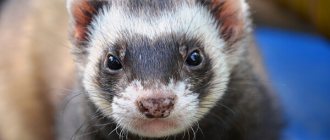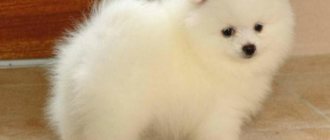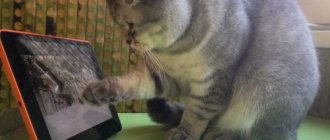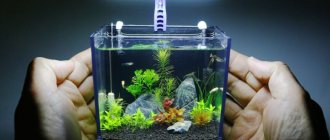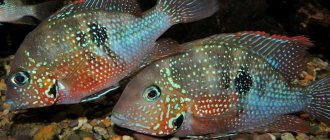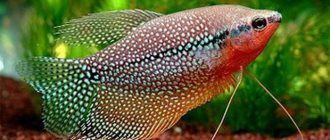Home » Useful Information
Not everyone keeps familiar pets at home: dogs, cats, ornamental birds, hamsters. Lovers of unusual pets inevitably have to become real experts in their care, otherwise the animal will fall ill and die. But many are not afraid of new knowledge, and the homes of such enthusiasts are filled with creatures that you would not expect to see outside of nature. For example, a house bat.
- 2 Is it possible to keep a bat at home?
- 3 What do bats eat at home: drawing up a diet and diet
- 4 Other nuances of content
4.1 Video: how a mouse can behave in an apartment
Main characteristics
What is a house bat? This is a typical representative of the order Chiroptera. You can recognize it among other individuals by several distinctive features:
- Large, black eyes, which at first glance may seem quite cute.
- Small size.
- Fast and sudden movements while moving.
- Soft fur, the shade of which on the tummy is usually somewhat lighter than in other places.
- Very long limbs, and the bones look like a hook in appearance.
Another feature is the habitat in which the mouse is accustomed to living. They feel most comfortable in small, dark places. Usually these are caves.
What kind of animal is that
Bats are a suborder of bats. The name is due to the anatomical structure: from the toes of the front paws through the sides to the hind limbs, an elastic membrane runs, connecting them (“hands” literally turn into wings). In nature, they prefer to settle in caves and rock crevices. In villages and cities they can be found in secluded dark places: in attics and abandoned buildings. They are characterized by a nocturnal lifestyle. Contrary to popular belief, they are not blind at all - they see (their vision is black and white), but they perfectly navigate in the dark thanks to their remarkably developed hearing.
On average, bats are small in size (comparable to small birds - tits, sparrows). At the same time, they are very nimble, and in flight they can reach speeds of up to 50 km/h. The body and head are covered with short fur that is soft to the touch, the muzzle, depending on the species, can be more or less similar to the muzzle of an ordinary mouse, but the ears of flyers are larger.
In the wild, these mice live for about 30 years. They will live a long time in captivity if the right conditions are provided.
About the content
Many people wonder whether it is possible to keep a bat at home? Zoologists answer this question unequivocally – not recommended! It is worth noting that this is a rather exotic individual that is not adapted to domestic conditions. If, after all, a person decides to have a furry pet at home, then it is necessary to create appropriate conditions for it. A pet bat can only be kept in a spacious enclosure, in which it can fully move and hide from prying eyes.
- It is recommended to lay clean paper on the floor and change it promptly.
- You should definitely hang a thermometer near your habitat. This individual can exist under various conditions. For example, during meals the temperature should reach up to 30 degrees - this temperature is the most optimal for complete digestion. It should be a little cooler before bed.
- The ends of the wire near the mesh must be carefully secured to avoid sharp corners that could cause injury to your pet.
- Another important indicator is humid air. It is recommended to install a special device – a humidifier – near the mouse’s house.
Pay special attention to the issue of keeping a domestic bat: only in conditions as close as possible to natural conditions will it feel comfortable, you will avoid its whims and various kinds of diseases.
Feeding a house bat
Feeding a bat kept at home is very difficult. Her diet consists of:
- Mealworms.
- Adult Khrushchev.
- Pupae.
- Milk formulas.
To make the worms more nutritious, they are placed in special jars and intensively fed with food containing protein and vitamins.
Bats are also given milk formula using a pipette. The mixture usually consists of milk, chicken yolk, brewer's yeast or wheat bran, calcium glycerophosphate, honey, rosehip syrup and vitamin E. The mixture is regularly saturated with crushed multivitamin tablets. The first time feeding is carried out in this way: the bat is held in the hands in its natural position and brought to the mealworm's mouth . After this, the animals themselves must learn to feed on the worms in the jar. They are very gluttonous. They can eat up to 60% of their weight at one time, which can lead to indigestion and death of the animal. Therefore, it is necessary to strictly monitor the amount of food they consume.
Interesting: How many legs do a spider and a tick have and how to distinguish these animals
Nutritional Features
A very important question: what to feed a bat at home? The most important thing is that they need liquid in large quantities. Several drinking bowls, at least three, should be installed around the perimeter of the enclosure. It is recommended to change the water in them daily. Bats get their own food: worms, beetles, caterpillars, pupae, etc. Naturally, she will not be able to do this at home, so the owner himself will have to hunt for insects. Some pet stores sell special ready-made mixtures. Zoologists strongly recommend not to overfeed this individual. This is due to the fact that overeating will negatively affect the digestive system, an upset stomach will provoke the appearance of excess weight. You should not take this issue lightly; remember that at home, an animal can die from any illness. Note that the bat will go into a long hibernation each winter, so there is no need to feed it until about three days before this period.
Is it possible to keep a bat at home?
The bat is an extremely difficult pet. “And I want to fly!” It is impossible to ignore the animal’s desire (it will wither away), which means that it will be necessary to provide air space. This should be a free enclosure of sufficiently large size. You need to cover the floor with paper and clean it regularly, changing the bedding (animals defecate in flight).
But the main difficulty with the enclosure is not its size. The fact is that the body temperature of bats changes, this is due to their motor activity - it is different during sleep, rest and flight. The ambient temperature should change accordingly - several times during the day. For the digestive system of an animal to function, a temperature of +30…35°C is required. If the temperature is lower, the stomach and intestines of the mouse function worse - instead of digestive processes, putrefactive processes occur in it, which can soon lead to the death of the animal. Too low a temperature also has a bad effect on the animal’s sleep - as a result, it gets sick.
To make the enclosure suitable for keeping your pet:
- it should have several compartments with different temperatures, the compartments are separated by a stainless metal mesh with small cells and the edges are carefully sealed to avoid injury to the pet;
- holes are made between the compartments so that the mouse can independently choose a comfortable temperature mode;
- drinking bowls are required;
- a compartment is needed for hibernation, which lasts 1.5 months - there should be a gradual decrease in temperature. Before hibernation, the animal is not fed for three days; 48 hours before going to bed, it is placed in a compartment evenly cooled to +3...5°C, and the animal’s condition is carefully monitored. If any deviations are noticeable, you need to move the mouse into a warm place, artificially interrupting winter sleep. In the first days, the awakened pet is hand-fed with formula milk and a small portion of regular food.
Behavior
A person who decides to become the owner of such an animal will undoubtedly be surprised by its behavior. The mouse will sleep almost all day, choosing a secluded place for this; it is unlikely that the livestock breeder will be able to see it. In the evening, the animal, on the contrary, will behave excessively active and will constantly move around the enclosure. Naturally, installing an aviary in the bedroom is rather unwise.
This is not at all an animal that can be picked up, stroked and caressed - you can only watch it.
The mouse sleeps interestingly - upside down, these are the most comfortable conditions for it, so it is worth providing all the conditions for its proper rest.
In the summer, she will begin to catch mosquitoes - this is the most interesting entertainment for her.
If you wish, you can feed the animal with homemade food: meat, milk or grain, but do not overdo it.
Why you shouldn't keep a bat at home
This animal very quickly becomes tame; it loves affection and attention. However, those who want to keep a pet bat need to know that:
- These mammals are nocturnal and are awake from 11 pm to 7 am , and you need to constantly communicate with them. Without this, they can become depressed and stop taking care of themselves. At night they fly, preventing their owner from sleeping.
- Chiropterans relieve themselves while flying, so if a mouse lives in an apartment, feces will be on all pieces of furniture and curtains .
- They require a lot of insects, which must be obtained somewhere.
Therefore, the decision to have such a pet should be deliberate and should be approached with all responsibility.
No entries found.
Where can I get it?
Many people see an animal with incredibly cute eyes in the picture and wonder where they can get the same animal. The easiest way is to go out into the forest and catch it. In some settlements, mice themselves fly into the house, and its owner carefully receives the guest and allows him to live there. Another option is to buy it from an exotic pet store.
Feeding insectivorous bat pups
29.06.2018
Feeding insectivorous bat pups
Bats are natural hunters. In nature, they bravely fight with prey, sometimes larger than the weight of the animal. Some species of bats feed on rodents, frogs, birds, scorpions, spiders and even fish, which they deftly pick up right from the surface of the water with the help of sharp claws and a tail membrane. However, in America there are species of bats that feed on flower nectar and fruits, as well as real vampires that drink the blood of large animals.
Russian bats feed on insects. Their diet may consist of mosquitoes, worms, midges, caterpillars, beetles, crickets, wood grubs, flies, grasshoppers, ants and cockroaches. Thus, they provide benefits by eliminating pests.
However, it happens that winged animals, getting injured or waking up during hibernation, fall under the temporary care of humans. And while caring for adults is relatively simple, feeding orphaned babies requires special skills and diet. What to feed a rescued bat during wintering or rehabilitation, how to prepare a mixture for the cubs - this will be discussed further.
Determination of age. To begin with, it is important to determine the approximate age of the winged patient. So, in adult animals the fur is thick and fluffy, while in babies it is short, silky or completely absent. Thus, cubs up to three weeks of age require an exclusively milk diet, up to six weeks - the inclusion of a small amount of a mixture of mealworms, up to seven - both previous types of food and an introduction to live food, and after that - food consisting entirely of insects.
(Fig. 1) Baby bat
(Fig. 2) Adult bat
Water. Whatever the age of your ward, there should always be a container of water in the cage or incubator, which must be changed daily. Optimal diameter –
no more than 5 cm, depth - no more than 2 cm, so that if an animal gets into a bowl, it can easily get out of there. Observe and make sure that the winged patient actually drinks water. If for some reason he cannot do this on his own, at first you will need to feed him from a syringe without a needle or, in case of severe dehydration, replenish the fluid subcutaneously with saline. For the first option, use a 1 ml tuberculin syringe without a nozzle or with a flexible elastomer cannula. Special feeding tubes for feeding rodents are also perfect. Photo 3 shows the author of the article feeding a bat from a syringe through a cannula.
(Fig. 3) Water supply through a syringe with a flexible cannula
Correct position. Pay attention to the position of the animal in Fig. 3: vertically, “sitting” on the ring finger of the hand, the back rests against the middle and index fingers, and the thumb fixes the animal on the chest under the chin. In this case, the ward is wrapped in a fabric roll up to neck level. This position is the most comfortable and safe for both you and the animal, and most importantly, it helps to avoid its release and protect you from bites. If you are not vaccinated against rabies, wear gloves as well.
Adult diet. For adult animals temporarily kept in captivity, live food such as mealworms, zoobass and crickets is suitable. However, it is important to decapitate the zofobas first to avoid its bites. If the bat does not feed on its own, tweezer feeding will be required at first. You can also squeeze out some of the insides of the zoophobass so that the animal can smell it and taste the food. Teach your child to eat on his own: place several mealworms in a wide container with low sides, and then each time bring the tweezers with the food closer and closer to the bowl, gradually lowering it to its bottom. Soon the animal will get used to finding food in it without your help. Do not forget to feed live food with fresh vegetables so that your winged ward receives the necessary vitamins along with it.
You need to feed the bat during its active period - in the evening, preferably after dark. The approximate norm for an adult animal is 4-8 zofobas or 6-12 mealworms. But look at its physical condition: for example, bats that wake up in winter need energy replenishment and weight gain, and therefore their norm can be significantly increased. And, conversely, well-fed animals preparing to return to the wild should not gain excess body weight, as otherwise this will affect their ability to fly. Ideal physical shape is the same width of the abdominal and chest areas. Additionally, one-time or in a course, you can give a micro-drop (at the tip of a thin food tube) of calcium in the form of syrup.
Feeding orphaned babies. As mentioned above, cubs up to seven weeks of age require a milk diet. However, regular milk is not suitable, since bats only digest soy or goat milk well. Use any soy or goat milk based infant formula. So, it could be “Infasa”, “Fitalakt”, “Nutrilak-soy” or their other analogues. It is good to add fresh goat milk to the mixture. The recipe is as follows:
· 1.5 scoops of infant formula
· 100 ml goat milk (if available)
· 2 tsp. egg powder or 1 white
· A quarter teaspoon of human baby probiotic in powder form
· 2 ml of veterinary food supplement, for example, Megaderm or analogues (preferably)
The finished mixture can be stored in the refrigerator for up to a day. Before each feeding, it must be heated in a water bath (in a container over hot water). It is given from a syringe through a thin plastic cannula/feeding tube or dripped onto a sponge applicator, the tip of which is placed in the baby’s mouth. The tip of an eyeshadow applicator is ideal.
The main risk when feeding is the danger of overfeeding. Babies at this age do not yet have a “stop signal,” so it is important to visually control the amount they drink. The abdomen should not resemble a ball and exceed the volume of the chest; ideally, it is good for it to be slightly rounded.
The feeding regimen of baby bats differs from that of flying foxes in that they require formula as their stomachs empty. In cubs without fur, food remains are visible even in the light; in older ones, you can carefully feel them. If you are not sure, just stick to an interval of 4-5 hours or listen to your ward: accustomed to people and the regime in captivity, they themselves begin to make sounds when they are hungry, asking for food.
After feeding, gently move a piece of toilet paper or tissue over your pet's genital area to help him go to the toilet.
Diet from 2-3 weeks. As soon as the baby begins to actively grow fur, begin to accustom him to more adult food. The mealworm mix is prepared as follows:
· Half a cup of frozen mealworms or zoobasa
1/6 cup cold water
· 1/3 baby formula based on soy or goat milk
· Half a teaspoon of any vitamin supplement for animals - in powder form
· 1 tsp. veterinary mineral supplement – for example, “Missing Link” or equivalent
· 1/6 tsp. veterinary dental liquid - for example, “Petkin Liquid Oral Care” or equivalent. The fact is that dark plaque on the teeth of bats is not uncommon; it occurs when they begin feeding on an insectivorous diet, and therefore it is better to use such a means of protection. Instead, you can later apply a micro-amount of dental gel for cats and dogs directly to the mealworm.
All ingredients are ground in a blender to a puree consistency. Pour the mixture into ice cube trays and freeze. Before each feeding, take out a cube (or more, depending on the number of animals) and defrost it in a container placed in another with hot water. The defrosted mixture can be stored in the refrigerator for up to three days; it cannot be re-frozen.
From the age of six weeks, the mix is given from a syringe without a needle in an amount of approximately 0.6-0.9 ml (depending on the size of the animal. It is most convenient to use a tuberculin volume of 1 ml. At the same time, do not forget to monitor the volume of the abdomen to prevent overfeeding. (Fig. 4).
After feeding by hand, be sure to wipe the area around the animal's mouth and chest with a piece of toilet paper or a napkin to prevent fungal infections (Fig. 5).
Before this, the main diet should be formula milk, and the mixture described above is used only as an additive in very small quantities, gradually increasing them. Later you can alternate the menu.
(Fig. 4) Syringe feeding a mixture of mealworms with additives
(Fig. 5) Hygiene after feeding
Diet from 4-6 weeks. From this age, you can begin to add live food to feeding with formula milk and mealworm mix. In the first days of getting to know it, it is better to offer worms cut into two or three parts, after which - whole ones; for starters, you can offer them non-living, thawed ones, gradually accustoming them to living ones. A headless zoobass would also work.
From the age of 7 weeks, the animal should be completely switched to live food.
Feed storage. Mealworms and zofobas can be bred in captivity. You can find enough information on how to organize this process on the Internet. In any case, since sometimes, especially in small towns, live food can be difficult to find, it is better to always have frozen food in reserve. The worms are defrosted in containers filled with a small amount of cold water. (Fig. 6). This will take no more than 10 minutes. Do not add warm or hot water, otherwise the heat will “cook” them. Thawed food should not be re-frozen.
(Fig. 6) Defrosting zofobas
Important: always warm the animal before feeding. To do this, hold it in your hand, wrapped in cloth, for 2-5 minutes. The vibration of his muscles will tell you about the warming process. When it stops, the animal is ready to eat.
Bon appetit and quick rehabilitation to your flying charges!
Adaptation conditions
It is worth keeping in mind that the bat is very freedom-loving. Living at home is very stressful for her. In order to avoid an unfavorable outcome, it is first worth considering the adaptation period for this living creature. First of all, you need to install an enclosure, the larger it is, the better. It is recommended to place it in a separate room for the first few days and limit the pet from constant observers. Think carefully about what to feed your pet bat. It is best to add live insects to it so that the mouse can hunt them itself and not lose its hunting skills.
As mentioned earlier, zoologists categorically do not recommend having such an individual in your home. This is due to several reasons:
- They are not used to living in a confined space; they need complete freedom of movement.
- Its activity is noticeably different from that of humans; naturally, it will cause discomfort at night.
- They make a lot of dirt, since representatives of this class are used to relieving themselves during the flight.
The domestic bat is a very capricious animal. If the created conditions seem unfavorable to her, she will fall into deep depression, which will lead to the inevitable death of the animal.
How to properly care for a bat
Like any other pet, bats must be kept clean. To do this, you should clean the floor from excrement as often as possible. If there are plants indoors, they are watered, hilled and other necessary procedures are carried out to care for them.
Caring for bats includes:
- feeding;
- taming a pet.
Diet
Bats need to drink plenty of fluids. Therefore, many drinking bowls should be placed around the perimeter of the enclosure. The water should be at room temperature, collected from a well or other drinking source. It is necessary to change the water every day so that it does not stagnate.
The food of a chiropteran pet consists of:
- worms;
- insect pupae;
- Zhukov;
- milk formulas.
Taming and communication
If a person purchased a baby bat from a nursery, it is quite possible that over time it will be possible to establish contact with it. But, as for adult individuals who are specially caught in order to be placed in a cage, you should not expect even a small amount of attention from them.
Did you know? The bumblebee bat, native to Thailand, is the smallest mammal in nature.
Such animals cannot be called tame; they will not sit and wait for the owner, like a devoted dog or cat. The concept of “communication with a bat and its taming” means observing the animal and possibly feeding it by hand.
What do bats eat? What do bats eat?
The life of these unusual creatures has long been shrouded in secrets, legends and speculation. Their amazing appearance and midnight lifestyle both frighten people and arouse genuine interest. We are talking about the elusive bats. Are these creatures really capable of drinking human blood, as the cinema is trying to convince us? What do mice actually eat in their natural habitat?
Brief characteristics of mammals
Bats are representatives of the order Chiroptera mammals. The appearance and size of representatives of this family differ from each other depending on the variety. But absolutely all these animals have a number of characteristic properties, in particular, body structure:
- Bats are unlikely to be confused with any other animal on Earth. Absolutely every mouse has amazing limbs. They are a kind of calling card of these animals. The paws of the animals are united into a common flight system by one membrane. For this reason, the order was called bats.
- The body of mice is covered with thick short hair, and the hind legs really look like mice. The front ones are “sharpened” under the wings.
- The shape of the head varies among different species of bats. Some animals have long ears, while other members of the order have much shorter ears. The same applies to the features of the muzzle. For some, it looks like a pig's snout, while others even look like a dog.
- The size of bats also varies and depends on the specific species of animal. There are very miniature creatures, whose body length is several centimeters, and real giants, up to 0.5 m long. The wingspan of mice can range from 10 to 180 cm.
- The vision of bats is poorly developed, and therefore they see poorly. In addition, these consciousnesses do not distinguish colors at all. Vision problems are compensated by excellent hearing. This is what bats have developed superbly. Some of the varieties are able to detect the sounds made by insects that swarm in tall grass.

